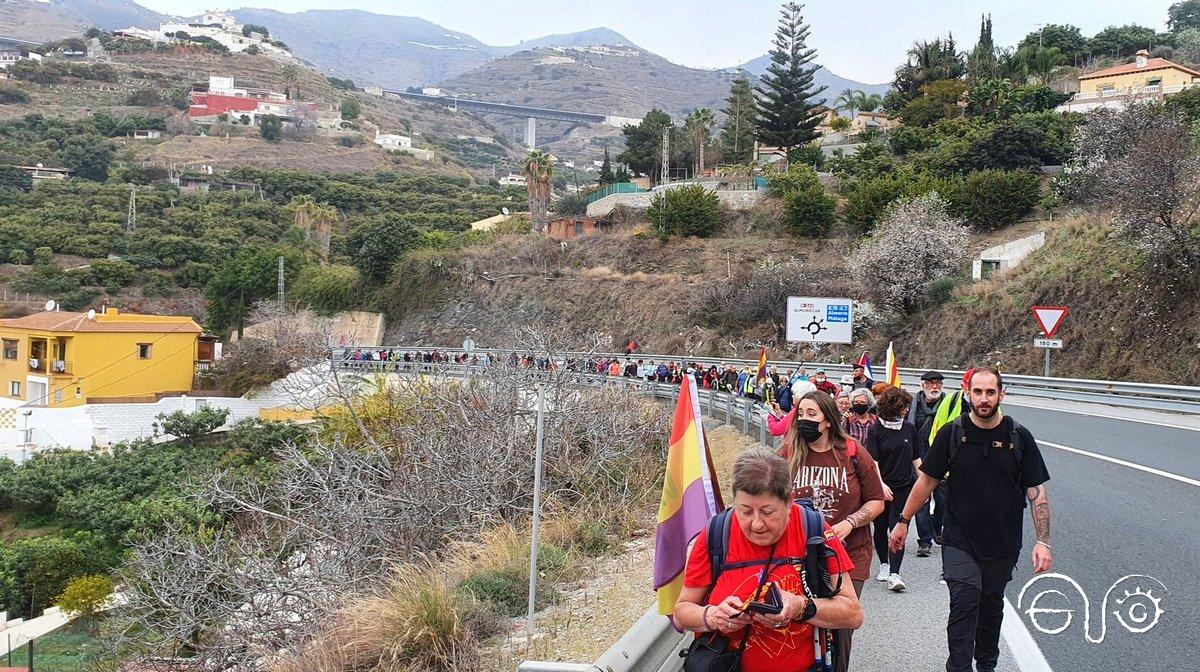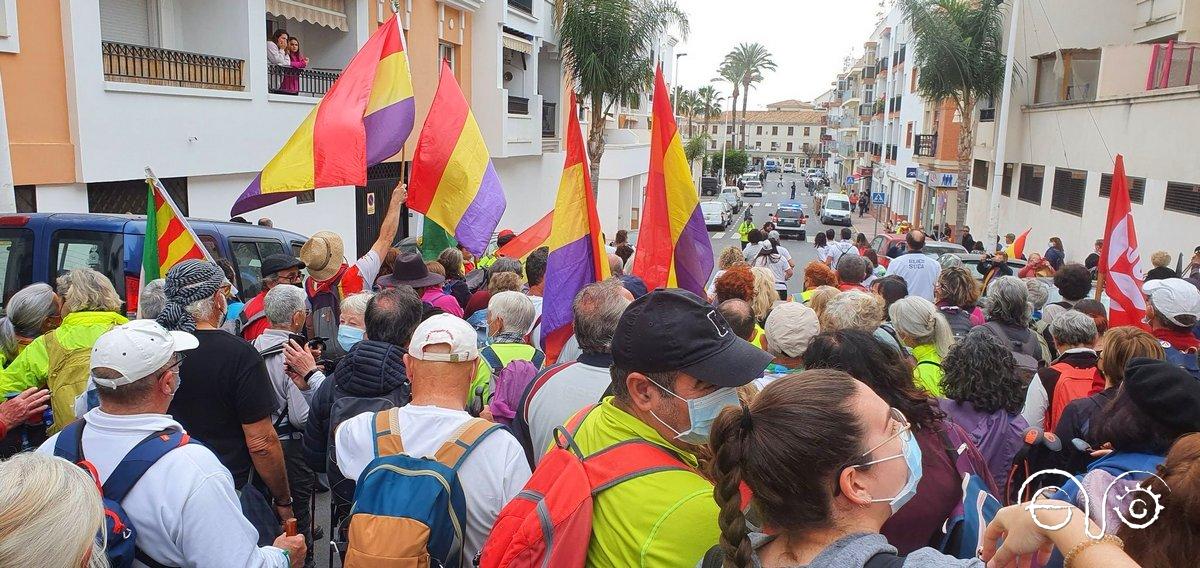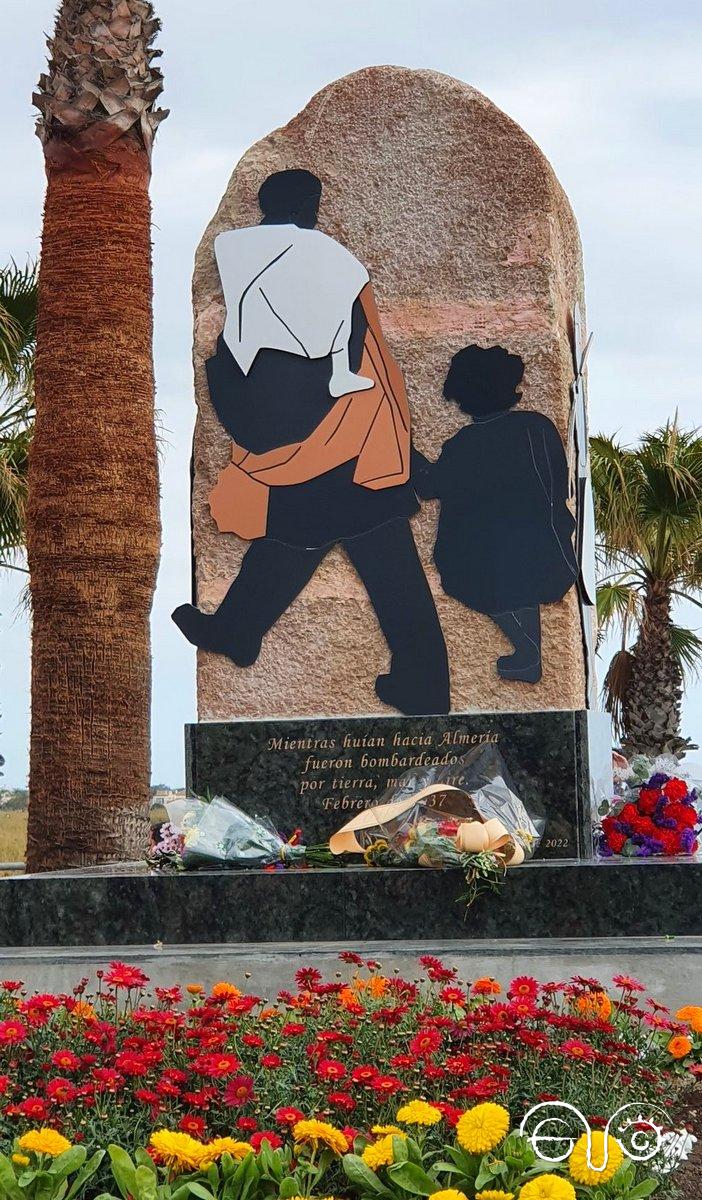This week marks the anniversary of La Desbandá, the time in February 1937 when thousands of people from all over Andalucía tried to walk from Málaga to Almería, hoping to get away from Franco’s forces and the threats made by Queipo de Llano against the innocent population. Between 100,000 and 200,000 tried to flee and several thousand (the figure is believed to be between 3,000 and 6,000) were killed by the bombs fired on them from Italian and German aircraft, shelling from the Nationalist ships Baleares, Canarias and Almirante Cervera and Italian fascist tanks, with their black-shirted troops. This was the biggest massacre of the Civil, but it went largely unremarked due to a lack of reporters on the ground and because Franco tried to hide what had happened.
However, in 2005 different Historical Memory associations in Andalucía began a campaign to raise awareness of this tragic episode in Spanish history, and in 2017 it was decided to commemorate those who died, were injured or suffered repression during La Desbandá by organizing a march along the same route, along the coast of the provinces of Málaga, Granada and Almería. More and more people have taken part each year, including some foreigners. They either do the whole 250 kilometres, or one or more of the ten stretches of the route: for example, from Almuñecar to Salobreña, where on Sunday 6 February a monument to La Desbandá was officially unveiled.
In her book ‘Un boomerang en Jimena de la Frontera’, Ángeles Vázquez León, who was a child during the war and survived La Desbandá, expresses her surprise that she never heard anything about that atrocity afterwards. “It was a tragedy that those of us who lived through it will never forget,” she wrote. “Thousands of people of all ages, fleeing in terror, in a panic, hunted down like rabbits on land and by sea and air. Were there no witnesses who could have written about all that”?
And later, describing their experiences and the hardships they suffered as the days went on and they continued to walk, she said everything became even worse as they approached Nerja.
Just before we got there, ships started firing cannons at us… walking at night was best, because the ships and planes left us alone; during the day, they started early in the morning, nearly always the ships, but I wasn’t as afraid of them because I don’t remember them firing directly at the road, they fired in our direction; we threw ourselves to the ground and the shells whistled over us. If they were ahead or behind us we kept walking. But not the planes, no. They came directly for us and all of a sudden there would be a lot of them, on all sides, bombarding us and firing machine guns at us. I suppose those aviators were very proud of their courage, attacking a really dangerous enemy, an enemy consisting of mostly women and children, who they could practically attack at will, because they were on their own. I don’t know who I hated most at those moments, those who were massacring us or those who were letting us be massacred, without coming to our aid. Was there no ship that could have come to stop them? Were there no planes to attack the ones that were bombarding us? Were there no lorries that could have come to pick us up….? There we were, the same ones as always, cannon fodder, people who had nothing to do with what was going on, but who were suffering to the extent of losing their lives. Those who had brought about this disaster were comfortable in their offices, none of them was on the road; I hated every one of them and I wanted them to be in the same situation that we were. There was nothing left of the happy child I used to be, full of dreams and hopes, and I hated them with every atom of my being for that and for having made me hard and insensitive, someone who, seeing the dead, destroyed bodies, only thought that at least that wasn’t me and I passed them by almost without shuddering….
Thanks to people like Ángeles who have written of their experiences, and the associations who commemorate this tragedy each year, La Desbandá is gradually becoming more widely-known now, and it is essential that it continues to be marked and not forgotten. “Those who cannot remember the past are condemned to repeat it” (George Santayana).



